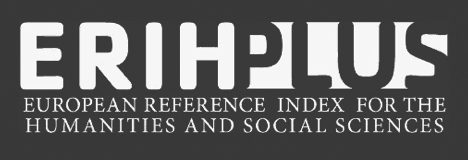SEM and OM studies 01epidermis in pinnae of Marattiaceae sensu lato.
Keywords:
SEM and OM analyses, cuticular membrane, morphology 01guard cells, Marattiaceae sensu lato,Abstract
Previous studies of the epidermal characters of the Marattiaceae 5.1. - including Angiopteris Hoffmann, Danaea ).E. Smith and Marattia Sw. (Rolleri, Deferrari and Lavalle, 1991a), and a revision of Christensenia Maxon (Rolleri, . 1993) -led to an analysis of new characters th~t may be of systematic value, such as: projections of the outer periclinal cell walls (domes and papillae s. str.), types and distribution of cuticular membrane (including cuticle proper and cuticular layers in the broad sense), and the characters inherent in the morphology of guard cells. The research was carried out through surface and cross-cut views, with scanning eledronic mycroscope (SEM) and optical mycroscope (OM) on 5 species of Angiopteris, 2 species and lsubspecies of Christensenia, 8 species of Danaea, and 11 species or Marattia. The projections of the outer periclinal cell walls (domes and papillae, s.str.) are typical of the hypophylls in Angiopteris, Danaea, and Marattia, which present smooth or ornamented domes of variable height. This kind of epidermis has been termed" subpapillose". Papillae S.str. have only been observed on the costa of pinnae in those 3 genera. The cuticular foldings (filigree, striae, and ridges) are present in AngiiJpteris, Danaea, and Marattia. The epicuticular wax is also present in these genera, showing some quali-quantitative differencesas to density and morphology. It is moreabundantand diverse in Angiopteris and Marattia, and scarcer in Danaea. The cuticular membrane is here studied for the first time for Pteridophyta and eusporangiate ferns. It is formed by a cuticle and a pectinated subcuticular layer resting on a thin wall of pure cellulose. The model is shared by the 4 genera here considered. The characters of the guard celllead to define a "marattiaceous" kind of stoma noticeably spread through Angiopteris, Danaea, and Marattia, wich is characterized by an elliptic outline (elongate); guard cells with thickened walls, both epidermal and poral; a generally thickened common wall between guard cells (polar rods or bars); some kind of polar pieces always present ("T" pieces or some other kind); external cell wall surface of the guard cells either domed (outer stomata ledges or rims) striated, or both, and 2 thin-walled (polar) areas at the end of the guard cells. Although Christensenia has porocyclocytic stomata with crescent-shaped, strongly arcuate guard cells, it also shows polar rods or bars and a thickened epidermal wall in its guard cells. The genera under study relate among themselves variably. Angiopteris, Christensenia, Danaea, and Marattia share the same model of cuticular membrane. Save for Christensenia, the other genera are united by the morphological type of stomata, the subpapillous epidermis, the frequent cuticular ornamentations, and the presence of some type of epicut,icular wax. Considering these observations plusother leafepidermal characters, already studied, Angiopteris and Marattia are moreclosely related to each other than to Danaea, although the "marattiaceous" stomata already described is also present in the latter. Possibly due to a peculiar adaptation to the environment, Christensenia is more distantly related beca use of its porocyclocytic stomata, but its epidermal models and other characters (glandular indument) point to affinities with Danaea.Downloads
Issue
Section
License
La publicación en la RMLP se realiza bajo los términos de la licencia de uso y distribución Creative Commons BY-NC-SA 4.0 para Argentina (https://creativecommons.org/licenses/by-nc-sa/4.0/) que permite a terceros la distribución, la copia y la exhibición del artículo siempre que citen la autoría del trabajo, la publicación en la RMLP, número concreto y las páginas en la que encontraron la información. No se puede obtener ningún beneficio comercial y no se pueden realizar obras derivadas con fines comerciales que no autorice la editorial. Si se remezcla, transforma o construye sobre el material, deben distribuir sus contribuciones bajo la misma licencia que el original.
La puesta a disposición del artículo en la RMLP supone para los autores argentinos el cumplimiento de lo establecido en la Ley 26899 de Creación de Repositorios Digitales Institucionales de Acceso Abierto, Propios o Compartidos, del 13/11/2013 en su artículo 5º, en lo relativo a la obligatoriedad de facilitar en acceso abierto los resultados de investigaciones financiadas por agencias gubernamentales y de organismos nacionales de ciencia y tecnología del Sistema Nacional de Ciencia, Tecnología e Innovación.









